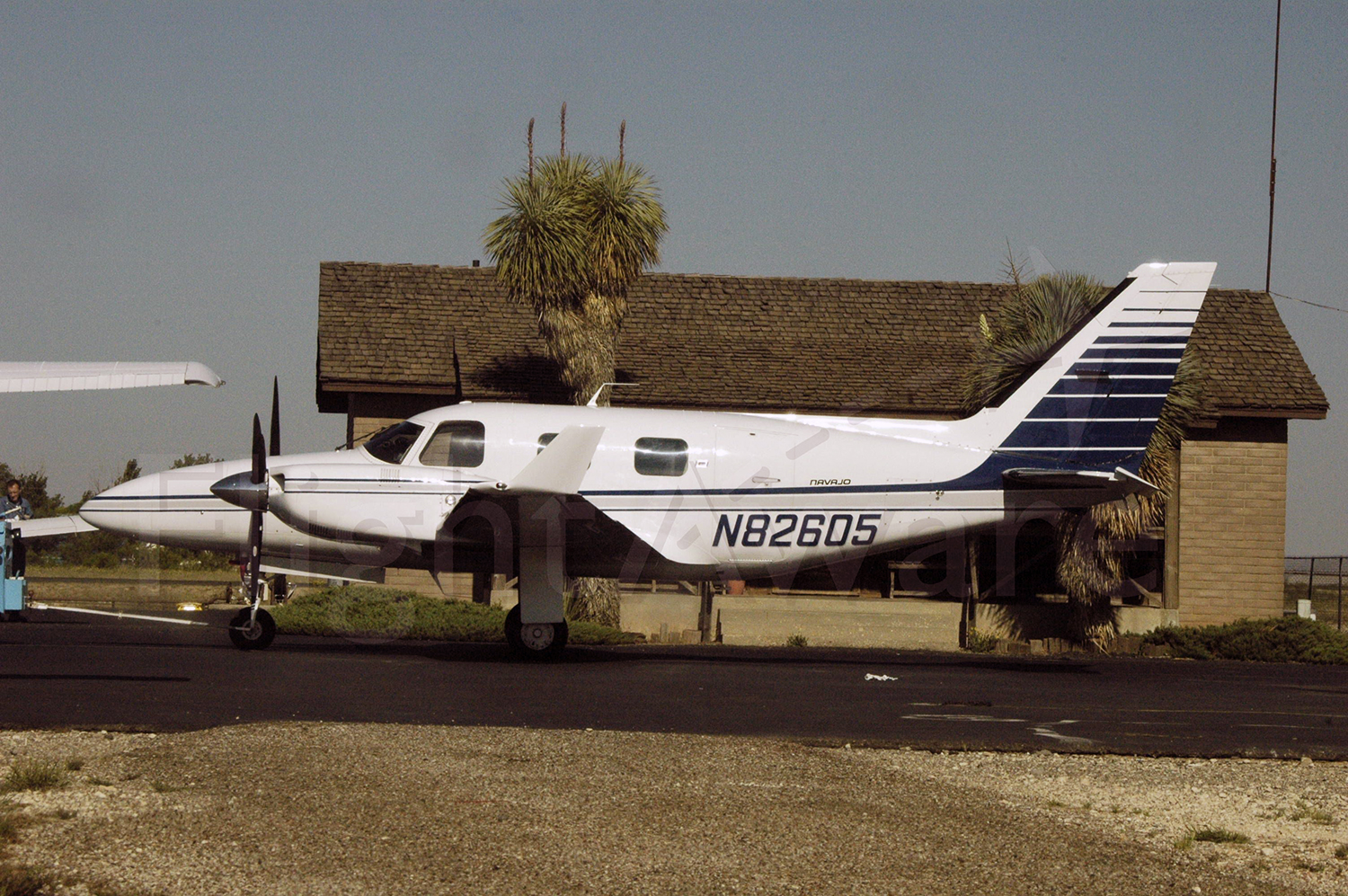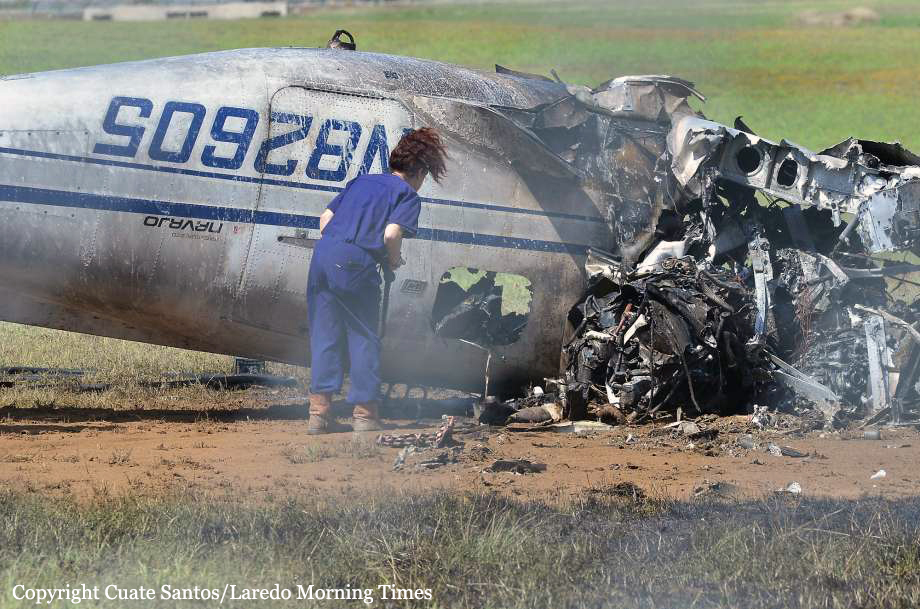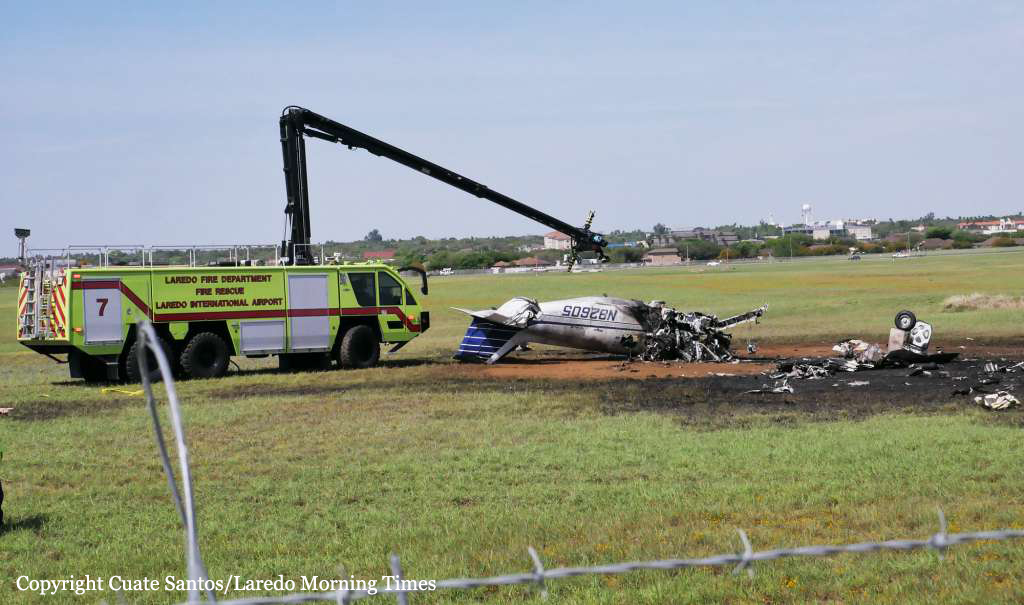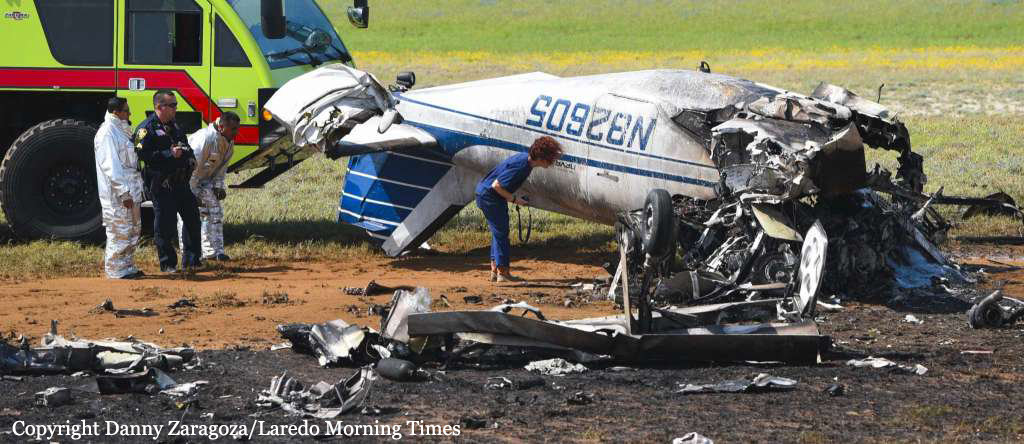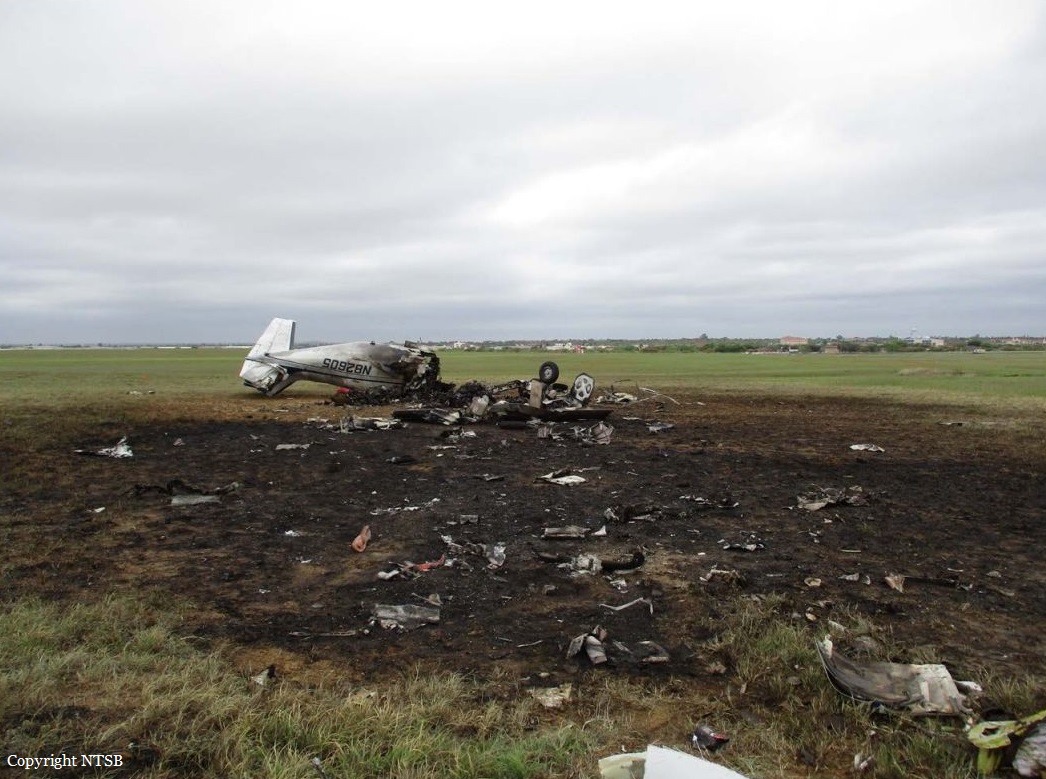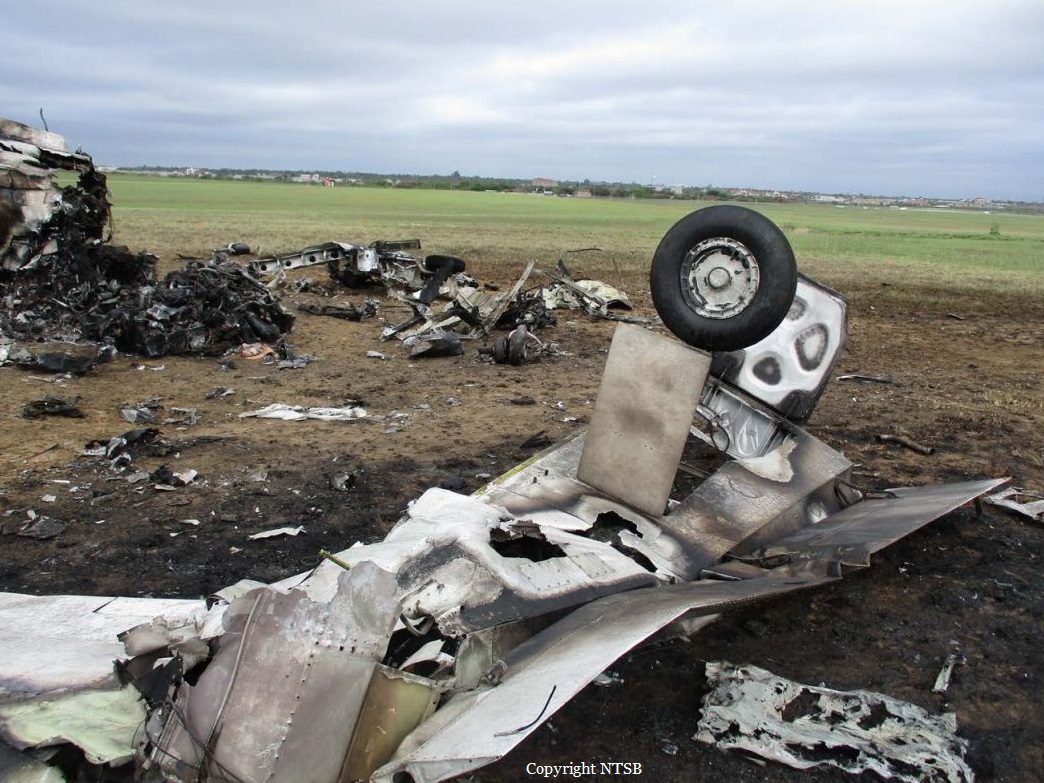Date & Time:
Mar 8, 2018 at 1038 LT
Type of aircraft:
Piper PA-31-310 Navajo
Operator:
Robert R. Marshall
Registration:
N82605
Flight Phase:
Takeoff (climb)
Flight Type:
Private
Survivors:
No
Schedule:
Laredo - Laredo
MSN:
31P-7730010
YOM:
1977
Country:
United States of America
Region:
North America
Crew on board:
2
Crew fatalities:
2
Pax on board:
0
Pax fatalities:
0
Other fatalities:
0
Total fatalities:
2
Aircraft flight hours:
3185
Circumstances:
The commercial pilot and passenger, who held a student certificate, departed runway 18R for a local flight in a multi-engine airplane. The pilot held a flight instructor certificate for single-engine airplane. Just after takeoff, the tower controller reported to the pilot that smoke was coming from the left side of the airplane. The pilot acknowledged, stating that they were going to "fix it," and then entered a left downwind for runway 18R, adding that they didn't need any assistance. The controller subsequently cleared the airplane to land on runway 18L, which the pilot acknowledged. Two witnesses reported seeing the smoke come from the left engine. Still images taken from airport security video show the airplane before making the turn to land with white smoke trailing and the landing gear down. The airplane was then seen in a steep left turn to final approach exceeding 90° of bank, before it impacted terrain, just short of the runway in a near vertical attitude. A postcrash fire ensued. The examination of the wreckage found that the left engine's propeller was not being driven by the engine at the time of impact. The left propeller was not in the feathered position and the landing gear was found extended. The damage to the right engine propeller blades was consistent with the engine operating at high power at impact. The examination of the airframe and engines revealed no evidence of preimpact anomalies; however, the examinations were limited by impact and fire damage which precluded examination of the hoses and lines associated with the engines. The white smoke observed from the left side of the airplane was likely the result of an oil leak which allowed oil to reach the hot exterior surfaces of the engine; however, this could not be verified due to damage to the engine. There was no evidence of oil starvation for either engine. Both the extended landing gear and non-feathered left propeller would have increased the drag on the airplane. Because the pilot's operating procedures for an engine failure in a climb call for feathering the affected engine and raising the landing gear until certain of making the field, it is unlikely the pilot followed the applicable checklists in response to the situation. Further, the change from landing on runway 18R to 18L also reduced the radius of the turn and increased the required angle of bank. The increased left banked turn, the right engine operating at a high-power setting, and the airplane's increased drag likely decreased the airplane airspeed below the airplane's minimum controllable airspeed (Vmc), which resulted in a loss of control.
Probable cause:
An engine malfunction for undetermined reasons and the subsequent loss of control, due to the pilot's improper decision to maneuver the airplane below minimum controllable airspeed and his improper response to the loss of engine power.
Final Report:
N82605.pdf163.13 KB
